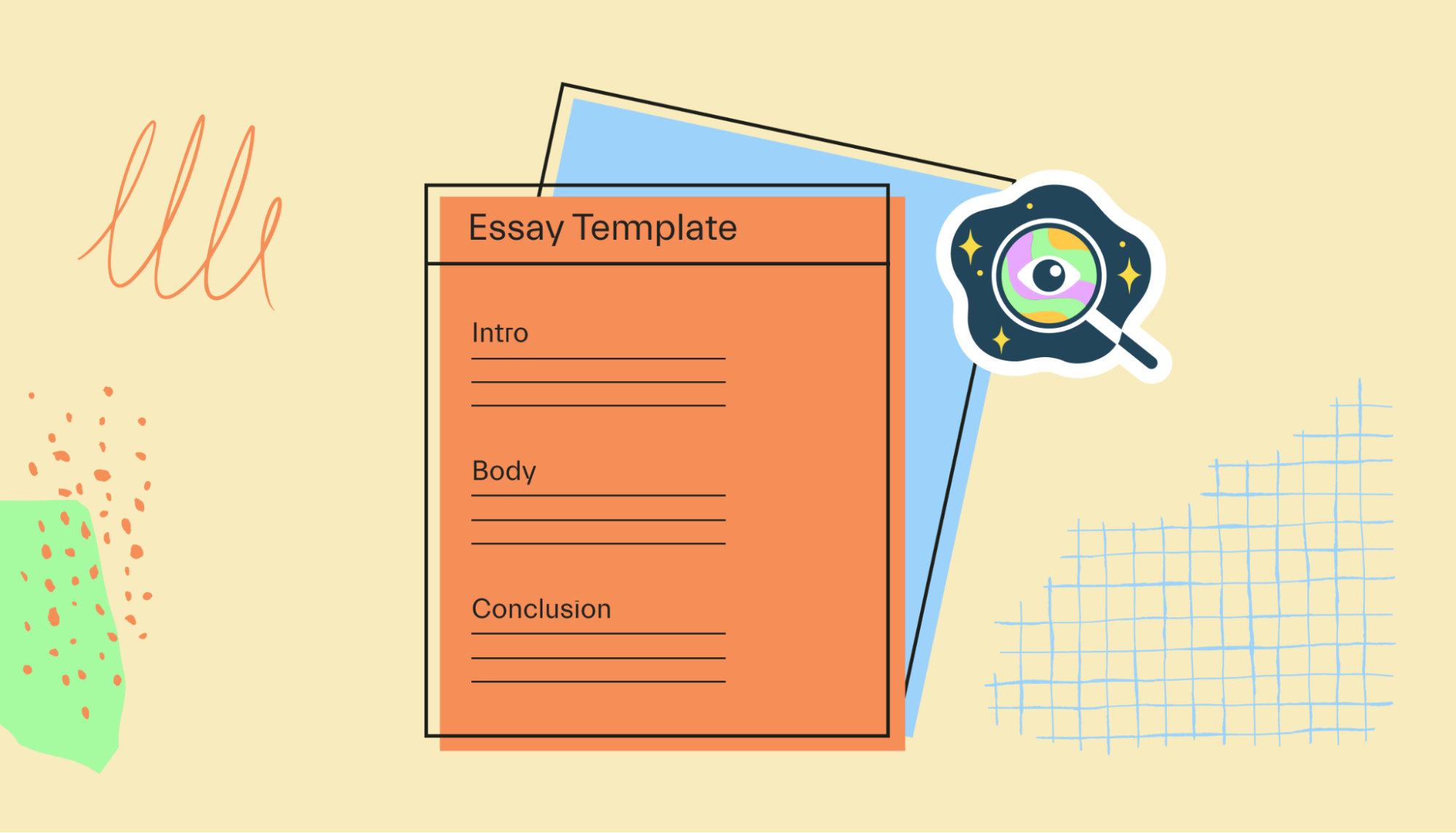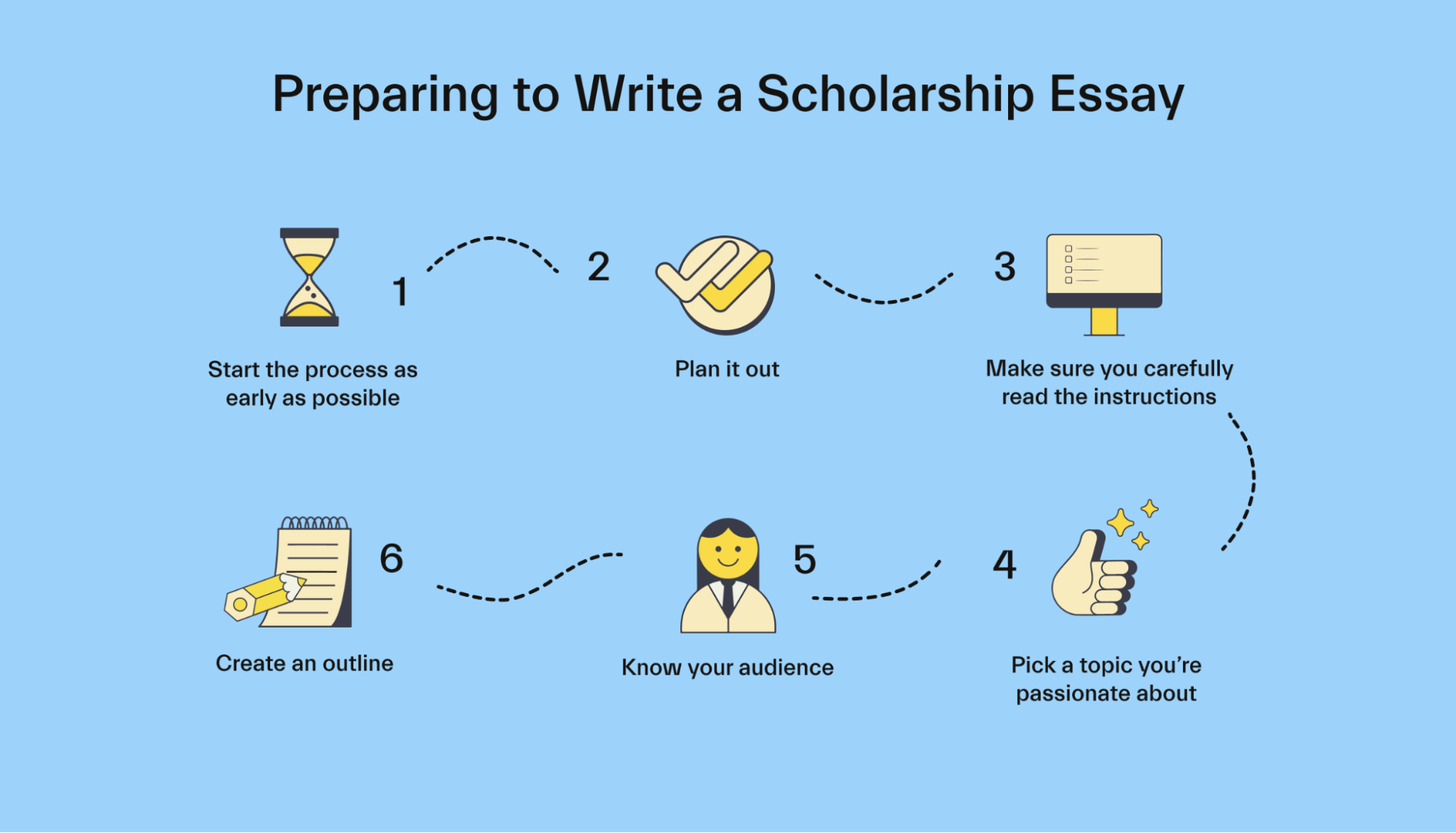Scholarships •
October 28, 2022
How to write a scholarship essay: preparing to write, formatting, tips, and more
Want to increase your chances of winning free money for college? Read this guide to writing a compelling scholarship essay.

In a world of ever-increasing college tuition, you need every penny of debt-free money you can get—which is what scholarships are for.
But the competition for college scholarships is fierce for this same reason, so you need to invest some effort in nailing the application.
One of the most vital portions of most scholarship applications is the essay. Wow the reader with your essay, and your chances of winning money for college go up.
So with that in mind, read our guide to preparing for, writing, and formatting a winning scholarship essay below.
What is a scholarship essay?
A scholarship essay is the written portion of most scholarship applications. This gives you a chance to persuade the scholarship committee why you deserve this form of financial aid for school.
Scholarship applications may all vary in their exact formats, but most have an essay. They tend to be more common for merit scholarships since you have to prove your merit (like the name implies).
Many essays come with a prompt—such as a question—you have to answer in paragraph form. Some may not, in which case you have more freedom to choose your topic. You’re usually limited to a word count as well.
Some scholarships may want a general essay about your future goals. Others may have more specific prompts. For example, if you’re applying for a scholarship for engineers, you may be asked how you’d deal with some sort of engineering-related problem.
How should a scholarship essay be structured?
As mentioned earlier, every scholarship will have a different essay prompt, set of instructions, and so on.
However, most scholarship essays follow the same format, consisting of three main parts:
Introduction
Body paragraph or paragraphs
Conclusion

Let’s look at this common scholarship essay format in more detail.
Introduction
Most scholarship application essays start with an introduction. This introduction must grab and hold the essay reader’s attention, driving them down the page toward the body of the essay.
At the same time, it must address all parts of the scholarship essay prompt and give an overview or summary of what the reader can expect to read in the essay. Basically, in this introduction, you’ll want to briefly mention each body paragraph’s main idea.
As for including a title: If the essay instructions tell you to, do it to avoid disqualification.
If not, then it depends. If you’re writing the essay in a separate Doc and attaching it, you can include a catchy but informative title above the introduction.
If you must write (or copy/paste) your essay into a text box on the scholarship website, then it’s best to leave out the title.
Body
The body of the essay is the main course. You get into the details regarding each of the points you introduced in your introduction.
Depending on the scholarship and subject matter, you might back up each of your claims with facts, data, and examples.
Some shorter essays may only need one body paragraph. Others may ask you to explore multiple ideas.
If the latter is the case, you’ll give each idea its own body paragraph and follow the same general structure for each one.
Don’t try to cover multiple ideas in one paragraph, or you could lose your reader’s attention.
Conclusion
The conclusion reiterates the points you made throughout your essay—almost like a restated version of the overview in your intro.
On top of that, you concisely explain your future educational and career goals to reinforce once more why you should win the scholarship.
Avoid being vague. Saying something like “I want to change the world” likely won’t stick with the reader.
Instead, be specific about what your plans are here. They don’t have to be as grand or world-shaking as ending a global problem. The scholarship committee wants to hear your genuine goals and dreams.
How to prepare to write your scholarship essay
The hardest part of writing your essay is starting. Once you get the ball rolling, you see progress, and it becomes easier.
If you really want to make your essay shine and make starting easier, though, you’ll want to make sure you prepare. Here are some tips on how to do so.

1. Start the process as early as possible
It’s easy to procrastinate writing your college scholarship essay. You tell yourself, “I’ll get to it later,” only to forget about it entirely and miss the deadline.
And with so much competition, dashing off something last minute probably won’t work. Plus, who wants that kind of stress, anyway?
Creating a great piece of writing can take time. You may run into writer’s block, and being able to take breaks while writing can help you develop new ideas to add to your essay.
If you start early enough, you’ll only have to write a little at a time, which the next tip will help with.
2. Plan it out
Another good idea is to break down the essay—and perhaps the complete scholarship application—into parts by creating a plan.
Create reasonable deadlines for yourself. Then, with those deadlines in hand, set aside time at the same time every day to work on the essay.
This will make the tasks much more manageable and potentially help you write a better piece. You’ll feel much less stressed, too.
3. Make sure you carefully read the instructions
The best piece of writing won’t earn you a cent if it fails to answer the prompt or follow the directions.
Read the directions carefully and take notes. You don’t want to miss anything important and waste all that time and effort just to be disqualified.
You’ll want to make sure you check the instructions before, during, and after you finish writing.
Since you can type most essays nowadays, you can easily go back and make fixes if you missed something in the directions.
4. Pick a topic you’re passionate about
Your passion for your essay topic will show through in your writing.
Not only is it hard to write about things that bore you, but your writing will come out more boring for the reader.
On the other hand, when you write about a topic you love, your reader will be able to pick that up and might be more engaged with your essay.
Now, even if the scholarship restricts you to a particular subject area, this tip is still applicable. Just pick a topic or angle within that subject that you have some level of interest in.
5. Know your audience
The prompt may be clear, but you still want to write with your audience in mind.
Don’t sacrifice your writing voice and personality, but try to tailor the essay to the organization that’ll be reading it.
This also goes for readability.
For example, say you’re studying one of the sciences. If the organization has a scientific background, you might be able to get away with more jargon.
However, if it’s a general scholarship, but the topic is related to your field of study, you’ll want to try and use less scientific language.
You won’t necessarily get disqualified for being too technical, but it may simply be harder to leave an impact on the reader when you use complex language.
6. Create an outline
Outlines help you get your thoughts out of your head and onto paper and see if they fit together well.
There’s no need to stress about proper grammar, formatting, and other matters yet. You have more space to just think about the essay topic and move things around.
Once you nail the outline, writing becomes so much easier.
Instead of turning your thoughts into complete sentences, you can just get some rough notes and structure in place first. Then, just expand these into complete sentences, make some grammatical fixes, and you’re done!
Extra tips to nail your essay
We’ve covered all the basics—structure, format, and how to prepare for your essay.
Here are three extra scholarship essay tips to help put your application at the top of the pile.
1. Use an easy-to-read font
You want to put every factor possible in your favor to get ahead of the competition.
Like we said earlier, readability is important—those readers are cranking through a lot of essays daily. Using a font that’s easy to read takes no effort but gives you that much more of an edge.
In general, sans serif fonts are easier to read than serif fonts. Serifs are those little lines coming off the edges of letters.
For example, here’s a Sans serif font (left) vs. serif font (right).

It may seem small, especially when looking at an individual letter.
But serif fonts make blocks of text look slightly “busier,” whereas sans serif cleans things up a bit. As a result, sans serif can make your essay a little more pleasant to read.
2. Have at least two other people read it
No matter how many times you read through it on your own, you might miss something—whether that’s a spelling and grammar mistake or something more substantive.
Getting fresh eyes on your work helps you catch these mistakes and find ways to make the actual content better.
A good idea might be to give one copy each to a:
Parent or family member
Friend
Teacher/professor
Getting multiple perspectives helps you create a flawless and compelling essay.
3. Don’t be tempted to plagiarize or pay someone
There’s no getting around it—as a student, you’re busy.
And with such fierce competition, it can seem tough to invest the time and energy you need into a winning essay.
You know plagiarism is bad, but the temptation may be there.
However, scholarship judges are pretty good at catching plagiarized work. Nowadays, they have software to aid their hunt for plagiarism, too. If the scholarship organization catches it or even suspects it, you could immediately be out of the running.
It’s a similar story if you pay someone to write your essay.
Yes, there are a lot of people and even businesses who write scholarship essays for pay, but you shouldn’t use these either. You can get in big trouble down the line if anyone ever finds out you went this route.
Organizations giving out scholarships can revoke your funds if they find out you plagiarized or paid someone for your essay.
Plus, your college or university could impose severe penalties on you, including kicking you out of the school entirely.
And both of these are just unethical. The essay’s supposed to be your work. If someone else is doing it—through plagiarism or pay—you didn’t really earn this scholarship at all.
Remember: by starting ahead of time and planning things out, you won’t have to fall back on these methods in the first place.
Get more money for school with a sharp scholarship essay
Writing a winning scholarship essay seems impossible when so many other students are vying for that scholarship money.
However, you can do it—especially if you take time to prepare, follow a good scholarship essay structure, write about something you’re passionate about, and use some of the other tips we laid out above.
There are nearly endless scholarships out there! If you keep applying and writing strong essays, there’s a good chance you’ll become a scholarship winner.
If you have any more questions about scholarships or other financial aid topics, feel free to check out our financial aid FAQs. Visit our blog for even more information about affording higher education.
Let's get
your money
- Get paired with a financial aid expert
- Get more money for school
- Get more time to do you






